Photo
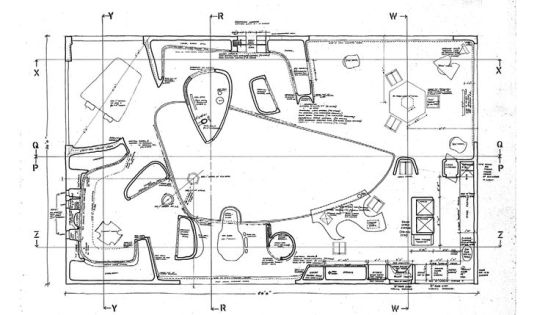
How the future will be? That precisely might have thought the Smithson couple. The reality have taught us that the curves musn’t represent always the future, despite this, it is a nice way to predict how houses would be.
Drawing of one of the “Future houses”, conceived by Alison and Peter Smithson in 1956
0 notes
Photo
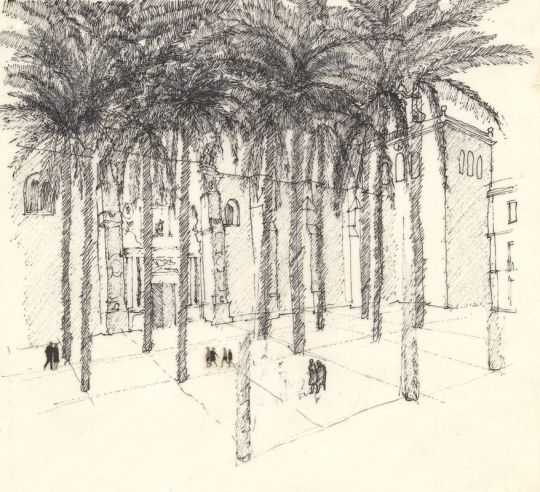
Why we tend to think that architecture is made by dead materials, that we cannot build a dome with leaves, or transform the trunks of palm trees into the pillars of a dome of air. Breaking the rules of aour common sense.
Sketch of the project Plaza de la Catedral, in Almeria, by Alberto Campo-Baeza (1978)
0 notes
Photo
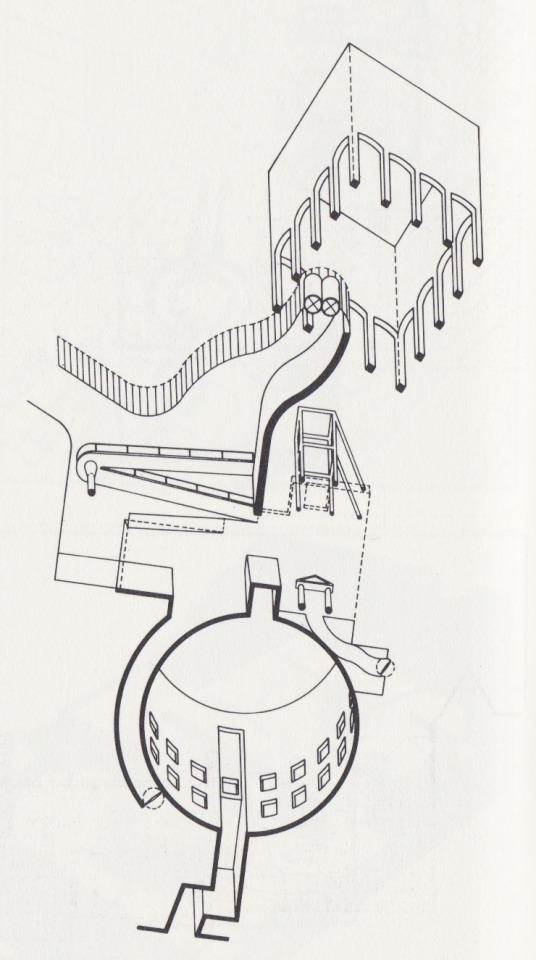
One of those perfect rare axonometrics that from time to time we find. These one caught by the foundation, give us in a schematic way the main spaces of an unbuilt project for a museum. Classicism and modernity in each corner.
Drawing of the Museum for Nordrhine Westfalen in Düsseldorf (1975), by James Stirling.
6 notes
·
View notes
Photo

Fruit of the modern expressionism and always in the shadow of another finnish architect, Alvar Aalto, a couple of architects delighted us with this design originated by their free minds and hands, liberated from every shape and constriction.
Sketch of the conference center Dipoli by Reima and Raili Pietilä.
2 notes
·
View notes
Photo
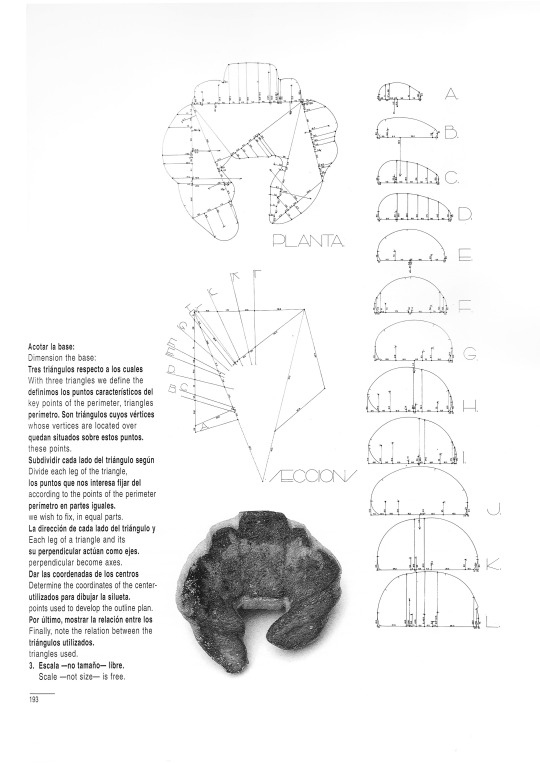
Just imagination. Use it and you could build castles in the air or just dimension a croissant. Example of simplicity and complexity in the same exercise. Congratulations!
Drawing by the architect Enric Miralles
1 note
·
View note
Photo
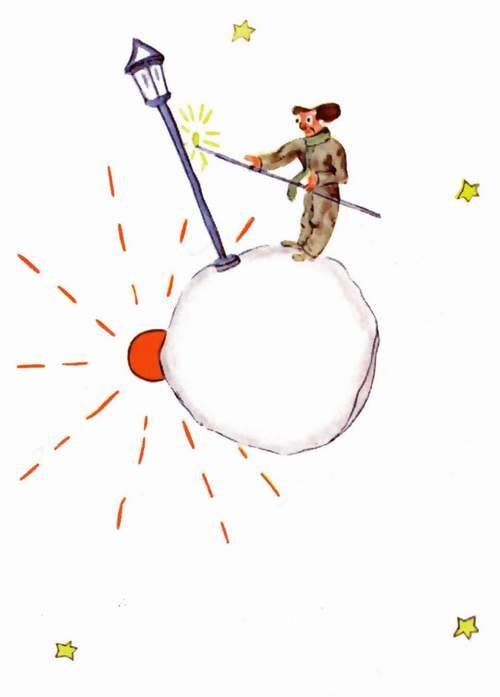
The power of drawings and sketches is the ability to represent new worlds, awesome ideas that are just in our heads and are left with lame words.
This design from The Little Prince by Saint-Exupéry give us the drawing of the planet were the minutes were days.
0 notes
Photo
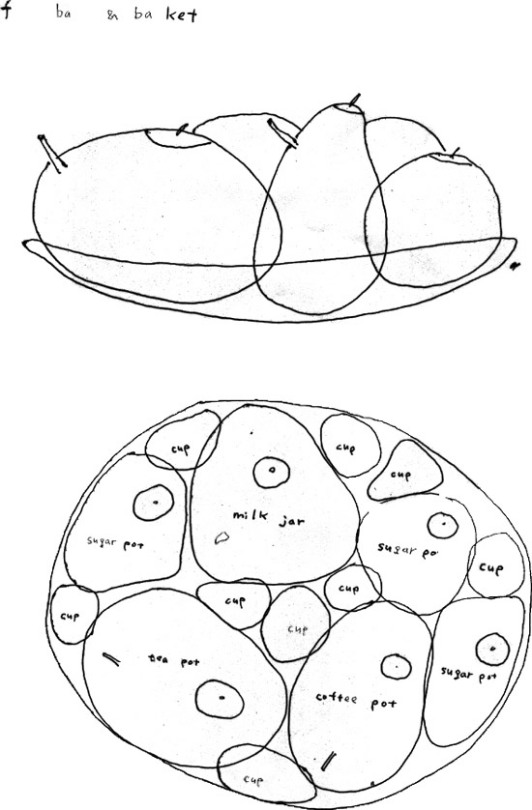
Can you see the teapots? If I tell you the truth what I saw at first were pears and oranges, but if after that you see the drawings of the Kanazawa Museum you will understand were it comes from...and perhaps you will see the tea set. Rooms close to each other, touching them, no corridors, a compression of elements in a tray. Soft and warm like the tea.
Sketch from the japanese studio SANAA.
0 notes
Photo
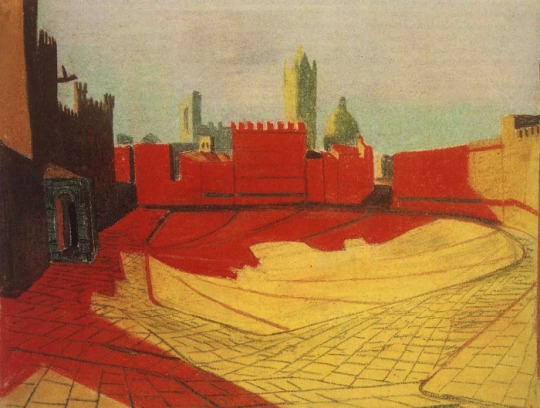
A little bit of colour please! Some would recognise clearly this plaza, or should I say “Piazza”. The stroke perhaps is not espectacular, but try to see the shadows and the paviments...also the light green-blue of the sky. The details are in the light, the volumes and the floor, maybe because he was an architect.
Travel sketch of Piazza del Campo in Siena, by Louis Kahn in 1951
1 note
·
View note
Photo

Do you need more words, or the name of this famous project comes directly to your mind?
Sketch of the Sidney Opera House by Jorn Utzon.
PD.: He won the contest with this drawing, no plans were needed
1 note
·
View note
Photo
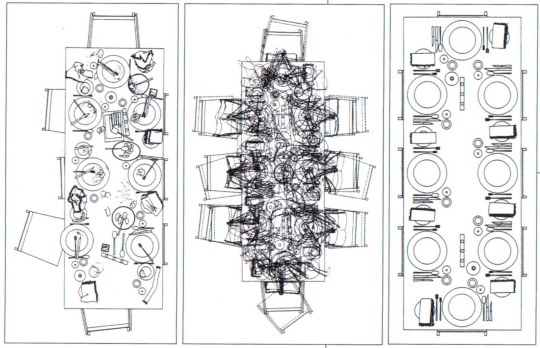
With the name of “Increasing disorder in a dinning table” the architects Wigglesworth and Till relate in 1997 a meal in three parts. You can read from the left to the right or the other way round. But the dinamism and the movements of the diners is achieved. Bon appétit!
1 note
·
View note
Photo

This axo plays with the transparency of the elements drawn in it. The depth of the building is told in just one plane, where you know exactly what is ahead and behind, but mixing everything.
111 Apartments (2010) by the architects FloresPrats in Barcelona.
0 notes
Photo

Chairs. A mess of chairs, and nothing else. Sometimes chaos produces nice and aesthetical drawings like this one. Perhaps because the simplicity of this chaos.
Design by the spanish designer Javier Mariscal in 2007.
5 notes
·
View notes
Photo

Water between walls, enclosed in the mass, trying to escape. Light filtering through the cracks.
Nothing more to say about the Therme Vals (1996) of Peter Zumthor in Switzerland, where everything is atmosphere.
1 note
·
View note
Photo
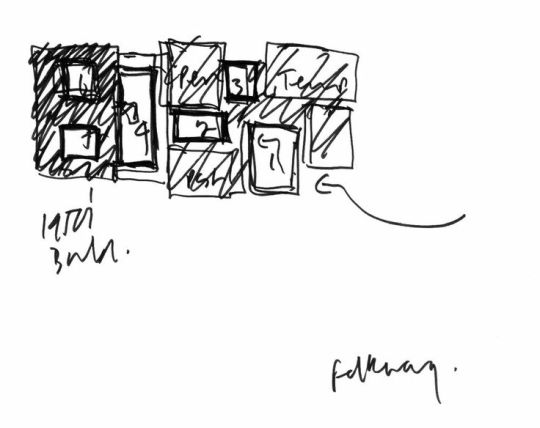
Indoor patios. With a really quick sketch the Folkwang Museum in Essen is resumed. The reality give us a low and modern building made in steel and glass; six structures envolving four inner courtyards, keeping behind its walls the first museum of contemporary art in Europe (1902).
The drawing is simple, the building too, leaving the importance to the art pieces that the visitors are expecting to see. Folkwang Museum (2010) by David Chipperfield Architects.
0 notes
Photo
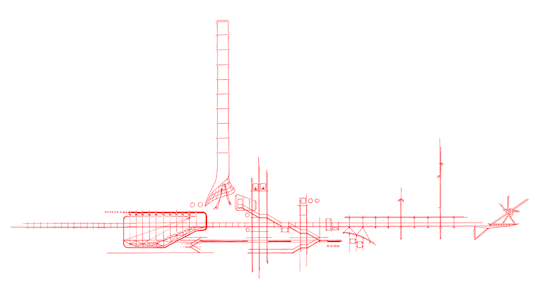
Rehabilitations are awesome. Sketches too. And when one of these permit you to imagine how an old power station is gonna be reused into an art gallery, to see the old chimneys, the industrial spaces and elements, then its function is done.
Don’t know if the final result would be so inspiring as this drawing, but Renzo Piano Building Workshop has clearly synthesized what they are going to do in the GES2 power station of Moscow.
1 note
·
View note
Photo
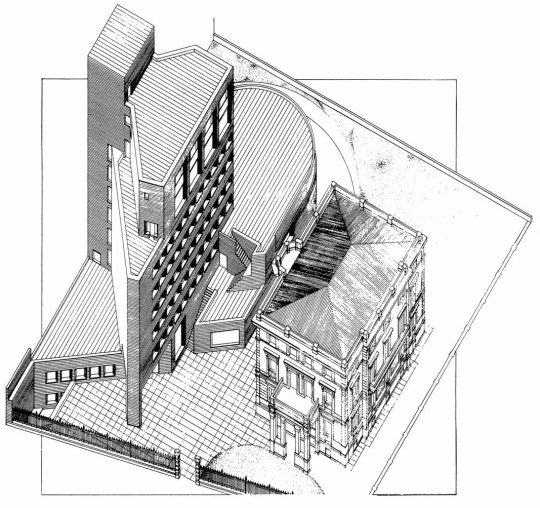
Old and new should not fight for having more presence and space. That’s what the architects of this building in the drawing thought when they had to resolve the project. A protected palace from the 19th and buildings close to the plot. The axonometric talks by itself.
Built with bricks, and close to the Paseo de la Castellana in Madrid, this naked building was a revolution in the spanish capital in 1965, in the proposal of “making city” not singular elements. Designed by Rafael Moneo y Ramón Bescós.
2 notes
·
View notes
Photo
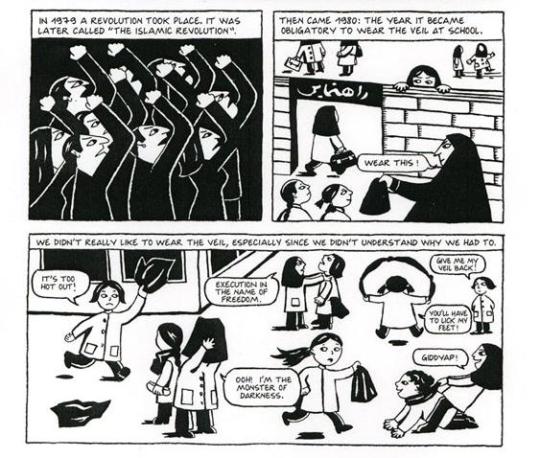
Drawings are much clearer than words many times. It is when the hands of Marjane draw the stories of her country. In black and white, no textures, thick strokes, with a very well prepared and thought script.
Persepolis (2000), give us the native knowledge of the revolution that went on in Iran and how the things changed there, by Marjane Satrapi.
4 notes
·
View notes